Your Rainforest animal adaptations ks3 images are ready in this website. Rainforest animal adaptations ks3 are a topic that is being searched for and liked by netizens today. You can Download the Rainforest animal adaptations ks3 files here. Find and Download all free vectors.
If you’re looking for rainforest animal adaptations ks3 pictures information linked to the rainforest animal adaptations ks3 topic, you have come to the ideal site. Our website always gives you hints for viewing the maximum quality video and image content, please kindly hunt and find more enlightening video content and graphics that fit your interests.
Rainforest Animal Adaptations Ks3. Wikimedia The first and most common animal adaptation in a tropical rainforest is camouflage. Key Stage 3 Could be used to introduce or recap adaptation depending on ability then extended into more difficult organisms such as cacti or more unusual examples such as the angler fish. For an animal to successfully exhibit this adaptation it needs not only to have a color that will help it blend into the environment but also a shape that is unrecognizable by its predator. Some adaptations of plants and animals are given.
 Design Your Own Animal With Adaptations Mrs Geography From mrsgeographyblog.wordpress.com
Design Your Own Animal With Adaptations Mrs Geography From mrsgeographyblog.wordpress.com
Grazing animals that eat grass and burrowing animals are more common in grasslands while animals dwelling on trees are more common in rainforests. Students will learn about adaptations made by animals living in the rainforest. Assessment criteria are included if required. Lianas - these are woody vines that have roots in the ground but climb up the trees to reach the sunlight. Tropical rainforest animal adaptations. Grassland animals have adapted to dry and windy climate conditions.
Grassland animals have adapted to dry and windy climate conditions.
Also detail of surface area to volume ratio and its importance to body shape. Students will learn about adaptations made by animals living in the rainforest. Grassland animals have adapted to dry and windy climate conditions. A power point detailing animal adaptations to their environment marine cold and hot climates. Students complete a group task identifying the adaptations of a number of rainforest animals then use this knowledge to create their own creature. Lianas - these are woody vines that have roots in the ground but climb up the trees to reach the sunlight.
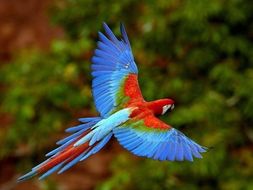 Source: tes.com
Source: tes.com
Plants found here have adaptations to help them get as much light as possible so they can still photosynthesize make their food. Key Stage 3 Could be used to introduce or recap adaptation depending on ability then extended into more difficult organisms such as cacti or more unusual examples such as the angler fish. Amazing Animal Adaptations Rainforests are home to an incredible range of animals from tiny insects to fierce jaguars and some of the most unique animals on the planet are found in rainforests. Assessment criteria are included if required. A lot of class prediction possible.
 Source: uteachlessons.com
Source: uteachlessons.com
Plants found here have adaptations to help them get as much light as possible so they can still photosynthesize make their food. How crabs have evolved to breathe above and below water how octopuses are able to camouflage themselves by changing. Grazing animals that eat grass and burrowing animals are more common in grasslands while animals dwelling on trees are more common in rainforests. Plants found here have adaptations to help them get as much light as possible so they can still photosynthesize make their food. In this KS3 resource students use their knowledge of animal adaptations to create their own rainforest animal.
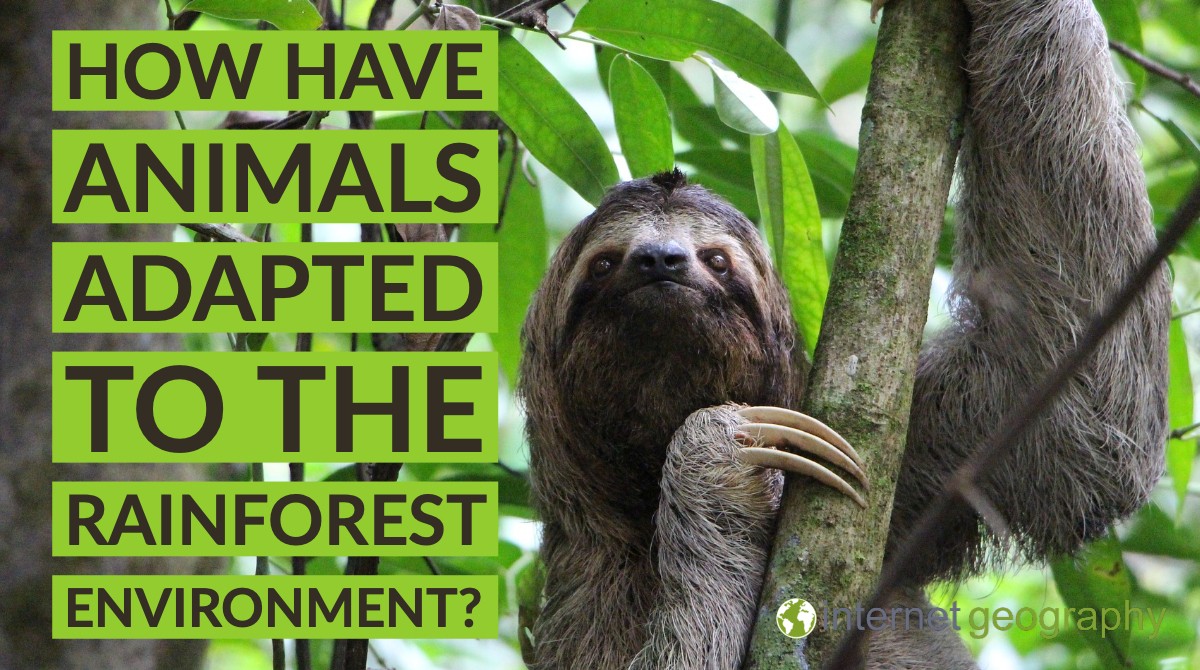 Source: internetgeography.net
Source: internetgeography.net
For an animal to successfully exhibit this adaptation it needs not only to have a color that will help it blend into the environment but also a shape that is unrecognizable by its predator. In this KS3 resource students use their knowledge of animal adaptations to create their own rainforest animal. Assessment criteria are included if required. Also detail of surface area to volume ratio and its importance to body shape. A few examples of animal adaptations in the worlds tropical rainforests are camouflage the times at which they are active poison and other deterrents and interdependence on other species.
Source:
Agriculture and food production 9 Antarctica 8 Atlas skills 7 Avalanches 1 Biomes climate zones 6 Canals 11 Carbon cycle 1 Climate 9. Agriculture and food production 9 Antarctica 8 Atlas skills 7 Avalanches 1 Biomes climate zones 6 Canals 11 Carbon cycle 1 Climate 9. A few examples of animal adaptations in the worlds tropical rainforests are camouflage the times at which they are active poison and other deterrents and interdependence on other species. Students complete a group task identifying the adaptations of a number of rainforest animals then use this knowledge to create their own creature. Some adaptations of plants and animals are given.

How crabs have evolved to breathe above and below water how octopuses are able to camouflage themselves by changing. A power point detailing animal adaptations to their environment marine cold and hot climates. Learn and revise about the ecosystem plant and animal life and deforestation of the rainforest with BBC Bitesize KS3 Geography. Lianas - these are woody vines that have roots in the ground but climb up the trees to reach the sunlight. Grazing animals that eat grass and burrowing animals are more common in grasslands while animals dwelling on trees are more common in rainforests.
 Source: pinterest.com
Source: pinterest.com
Wikimedia The first and most common animal adaptation in a tropical rainforest is camouflage. Green Eyed Tree Frog Source. Students will then create their own rainforest animal. Students complete a group task identifying the adaptations of a number of rainforest animals then use this knowledge to create their own creature. The following adaptations allow plants to survive in the conditions of the rainforest.
 Source: mrsgeographyblog.wordpress.com
Source: mrsgeographyblog.wordpress.com
Learn and revise about the ecosystem plant and animal life and deforestation of the rainforest with BBC Bitesize KS3 Geography. Grazing animals that eat grass and burrowing animals are more common in grasslands while animals dwelling on trees are more common in rainforests. The following adaptations allow plants to survive in the conditions of the rainforest. Learn and revise about the ecosystem plant and animal life and deforestation of the rainforest with BBC Bitesize KS3 Geography. How crabs have evolved to breathe above and below water how octopuses are able to camouflage themselves by changing.
 Source: studylib.net
Source: studylib.net
Plant adaptations to cold and hot climates included. Tropical rainforest animal adaptations. Adaptations by animals in the grassland are quite different from rainforest animal adaptations. Lianas - these are woody vines that have roots in the ground but climb up the trees to reach the sunlight. Students complete a group task identifying the adaptations of a number of rainforest animals then use this knowledge to create their own creature.
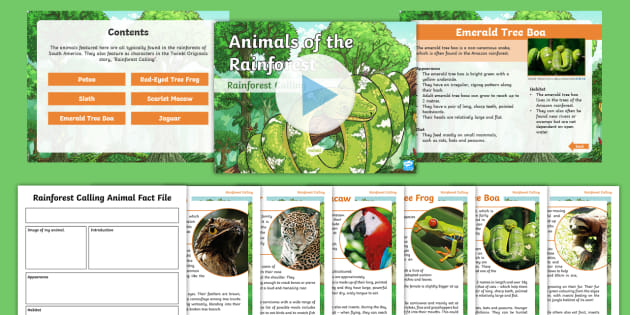 Source: twinkl.co.uk
Source: twinkl.co.uk
Key Stage 3 Could be used to introduce or recap adaptation depending on ability then extended into more difficult organisms such as cacti or more unusual examples such as the angler fish. Plant adaptations to cold and hot climates included. Key Stage 3 Could be used to introduce or recap adaptation depending on ability then extended into more difficult organisms such as cacti or more unusual examples such as the angler fish. Adaptations by animals in the grassland are quite different from rainforest animal adaptations. In this KS3 resource students use their knowledge of animal adaptations to create their own rainforest animal.
 Source: twinkl.co.uk
Source: twinkl.co.uk
Plant adaptations to cold and hot climates included. Students complete a group task identifying the adaptations of a number of rainforest animals then use this knowledge to create their own creature. How crabs have evolved to breathe above and below water how octopuses are able to camouflage themselves by changing. Agriculture and food production 9 Antarctica 8 Atlas skills 7 Avalanches 1 Biomes climate zones 6 Canals 11 Carbon cycle 1 Climate 9. Assessment criteria are included if required.
 Source: pinterest.com
Source: pinterest.com
Students will then create their own rainforest animal. Tropical rainforest animal adaptations. Plant adaptations to cold and hot climates included. Agriculture and food production 9 Antarctica 8 Atlas skills 7 Avalanches 1 Biomes climate zones 6 Canals 11 Carbon cycle 1 Climate 9. Learn and revise about the ecosystem plant and animal life and deforestation of the rainforest with BBC Bitesize KS3 Geography.
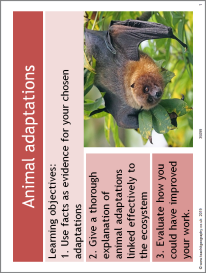 Source: teachitgeography.co.uk
Source: teachitgeography.co.uk
Tropical rainforest animal adaptations. A few examples of animal adaptations in the worlds tropical rainforests are camouflage the times at which they are active poison and other deterrents and interdependence on other species. KS3 lesson fully differentiated - PowerPoint is self explanatory - Assessment for learning present throughout lesson - All resources required for lesson attached Read more 300. Learn and revise about the ecosystem plant and animal life and deforestation of the rainforest with BBC Bitesize KS3 Geography. Grassland animals have adapted to dry and windy climate conditions.
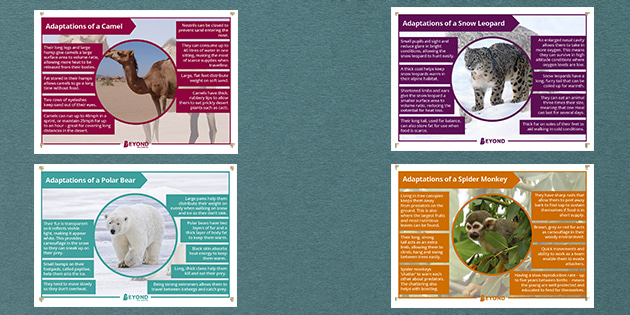 Source: twinkl.co.uk
Source: twinkl.co.uk
Wikimedia The first and most common animal adaptation in a tropical rainforest is camouflage. How crabs have evolved to breathe above and below water how octopuses are able to camouflage themselves by changing. Plants found here have adaptations to help them get as much light as possible so they can still photosynthesize make their food. The following adaptations allow plants to survive in the conditions of the rainforest. Amazing Animal Adaptations Rainforests are home to an incredible range of animals from tiny insects to fierce jaguars and some of the most unique animals on the planet are found in rainforests.
 Source: cz.pinterest.com
Source: cz.pinterest.com
A power point detailing animal adaptations to their environment marine cold and hot climates. How crabs have evolved to breathe above and below water how octopuses are able to camouflage themselves by changing. Amazing Animal Adaptations Rainforests are home to an incredible range of animals from tiny insects to fierce jaguars and some of the most unique animals on the planet are found in rainforests. Lianas - these are woody vines that have roots in the ground but climb up the trees to reach the sunlight. The weirdest kind of mimicry is known as the Browerian mimicry that involves the animal copying other animals of the same species.
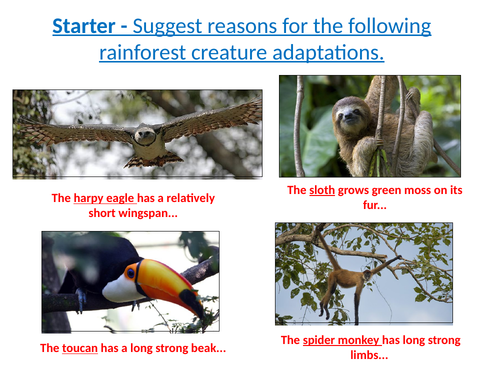
Some adaptations of plants and animals are given. The following adaptations allow plants to survive in the conditions of the rainforest. Wikimedia The first and most common animal adaptation in a tropical rainforest is camouflage. Key Stage 3 Could be used to introduce or recap adaptation depending on ability then extended into more difficult organisms such as cacti or more unusual examples such as the angler fish. Students complete a group task identifying the adaptations of a number of rainforest animals then use this knowledge to create their own creature.
 Source: teachitgeography.co.uk
Source: teachitgeography.co.uk
Plants found here have adaptations to help them get as much light as possible so they can still photosynthesize make their food. Students will then create their own rainforest animal. The weirdest kind of mimicry is known as the Browerian mimicry that involves the animal copying other animals of the same species. Learn and revise about the ecosystem plant and animal life and deforestation of the rainforest with BBC Bitesize KS3 Geography. In this KS3 resource students use their knowledge of animal adaptations to create their own rainforest animal.
Source: wordwall.net
Assessment criteria are included if required. A power point detailing animal adaptations to their environment marine cold and hot climates. Plants found here have adaptations to help them get as much light as possible so they can still photosynthesize make their food. Lianas - these are woody vines that have roots in the ground but climb up the trees to reach the sunlight. Grassland animals have adapted to dry and windy climate conditions.
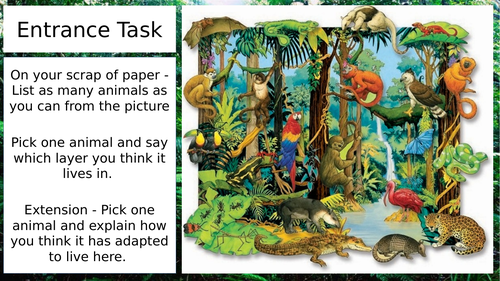
The weirdest kind of mimicry is known as the Browerian mimicry that involves the animal copying other animals of the same species. Green Eyed Tree Frog Source. KS3 lesson fully differentiated - PowerPoint is self explanatory - Assessment for learning present throughout lesson - All resources required for lesson attached Read more 300. Plants found here have adaptations to help them get as much light as possible so they can still photosynthesize make their food. A power point detailing animal adaptations to their environment marine cold and hot climates.
This site is an open community for users to do sharing their favorite wallpapers on the internet, all images or pictures in this website are for personal wallpaper use only, it is stricly prohibited to use this wallpaper for commercial purposes, if you are the author and find this image is shared without your permission, please kindly raise a DMCA report to Us.
If you find this site convienient, please support us by sharing this posts to your own social media accounts like Facebook, Instagram and so on or you can also save this blog page with the title rainforest animal adaptations ks3 by using Ctrl + D for devices a laptop with a Windows operating system or Command + D for laptops with an Apple operating system. If you use a smartphone, you can also use the drawer menu of the browser you are using. Whether it’s a Windows, Mac, iOS or Android operating system, you will still be able to bookmark this website.





